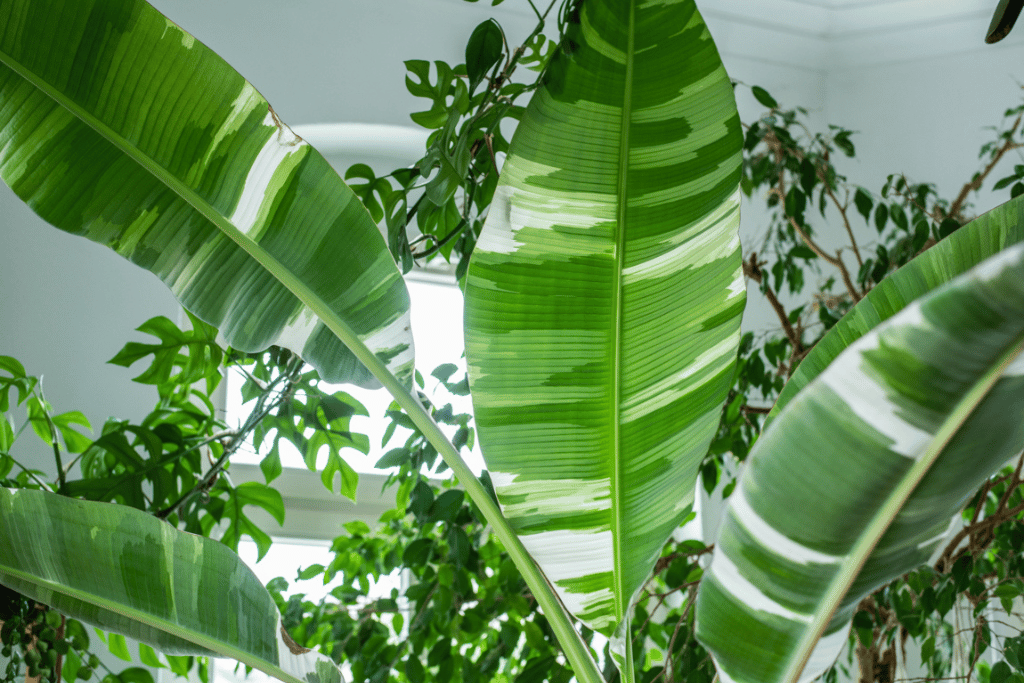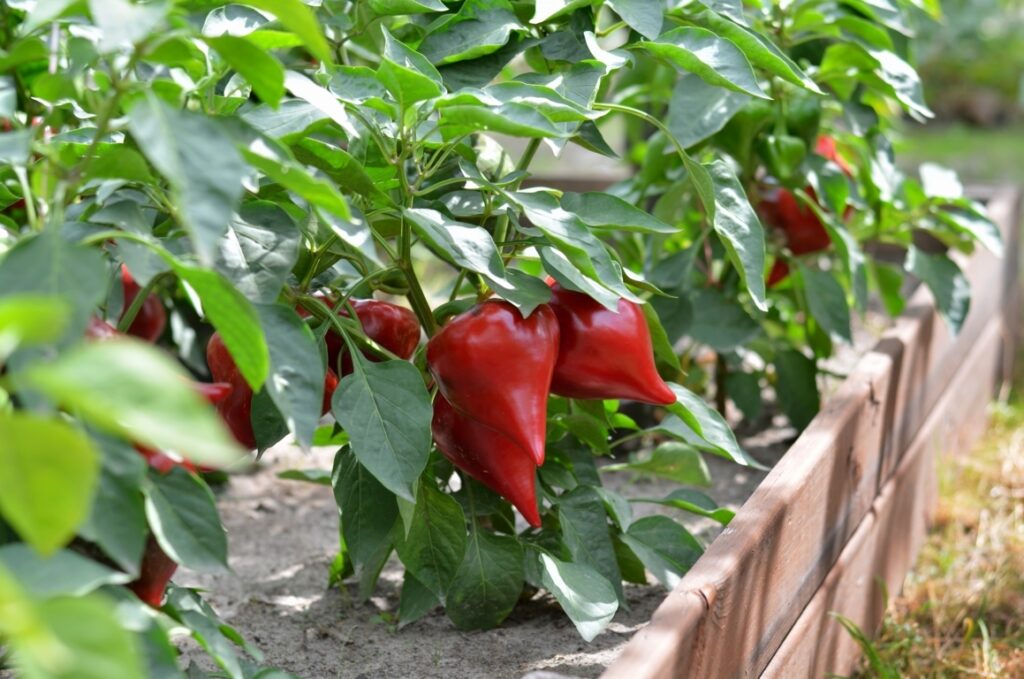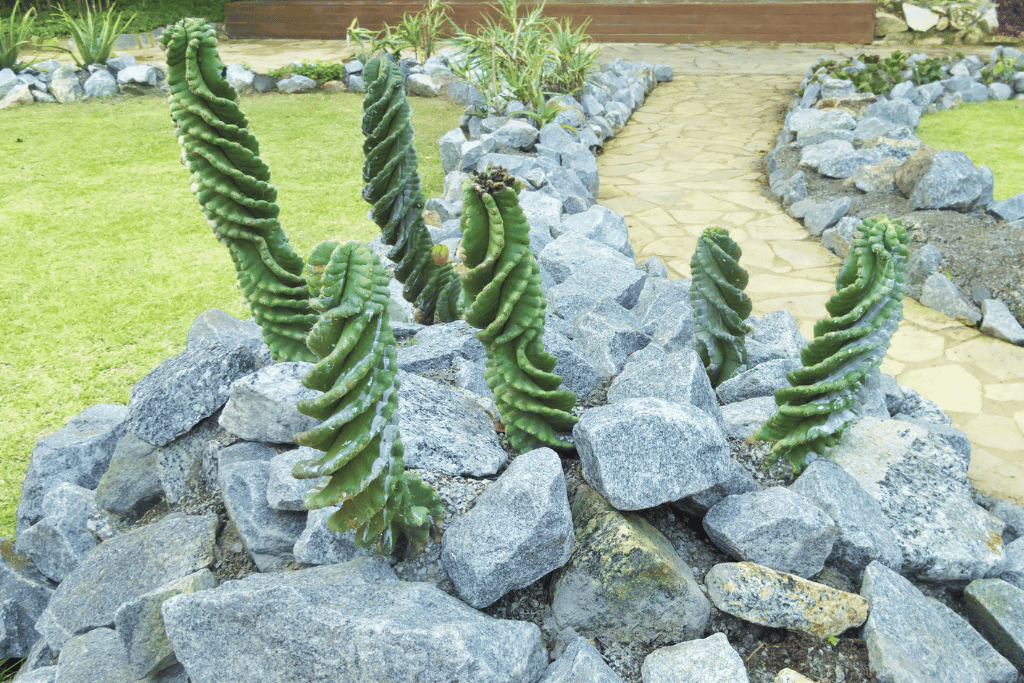
Banana trees are tall, majestic, beautiful and they produce bountiful bunches of the world’s most popular fruit.
I had the distinct honor of experiencing the grandeur of a banana plantation some years back when I visited my friend in Jamaica.
On my first full day on the island I was woken up early by my friend James:
“Ey mon we haffi gadun to mi banana walk fi reap da fruit.”
I got up excitedly ready to explore a completely unfamiliar side of fruit production. As an apple farmer, I’d never had any experience in tropical growing environments.
So you can imagine the enthusiasm I had to explore an exotic and intriguing landscape.
We scooted down to the river, jumped into his homemade bamboo raft and drifted across to his humble “banana walk.” There we prepared to harvest enormous bunches of bananas.

The experience didn’t disappoint. We hacked down a handful of banana plants with machetes and gathered the immense bundles of fruit, loaded them onto the raft and carried them back to the other side. There they were loaded up into the truck to get ready for the market.

My brief introduction to banana cultivation gave me a whole new perspective on fruit farming and a profound respect for the farmers who produce this staple fruit, always laboring hard and oftentimes earning minimal compensation for their troubles.
Luckily for tropical plant enthusiasts, bananas can be grown right at home. And variegated varieties are just splendid looking and may even provide you with a sweet snack!
History
The genus Musa is of the family Musaceae. The name Musa was given by Carl Linnaeus in 1753, derived from Mauz, the Arabic word for the fruit. Musa contains over 70 unique species all with various uses; some cultivated for edible fruit, others as ornamentals.
Many groups of Musa species have been developed into varieties cultivated for fruit production. The prominently produced and marketed species we all know well is the yellow Cavendish banana. Variegated banana trees offer up much different looking and tasting fruit, but delicious and nutritious nonetheless.

Variegated banana plants native to Southeast Asia and the South Pacific islands have been transported and naturalized around the world in other tropical regions where they thrive. Many variegated varieties are popularly cultivated in Florida and Hawaii.
Symbolic Significance and Health Benefits
In their native regions, banana plants are associated with fertility and wealth. Therefore it maintains a presence and special meaning at weddings and religious celebrations.
All plant parts of the Musa genus have been traditionally used medicinally in the Americas, Africa, Asia and India. Some species avail their stalks, flowers, roots, leaves and of course, fruits as edible sustenance.
Bananas as fruit are eaten on a massive scale around the world. Packed with plenty of fiber, antioxidants vitamins and minerals like potassium, magnesium, copper, folate and riboflavin, their health benefits are well-studied and documented.
Banana plants grown indoors usually don’t produce fruit. However, their air-purifying abilities are outstanding. And just the presence alone of the placid plant will calm your nerves and soothe your soul.
Growth Habit
Most variegated varieties of banana plants have varying colored stripes and splotches strewn over their leaves and fruits, hence the moniker “variegated.” These exceptionally unique plants are often referred to as trees due to their height and fruit production, but they’re actually some of the largest herbaceous plants on the earth.

The trunk is not a woody stem but in fact, is spongy, soft with an interior that feels something like moist, dense styrofoam. It is referred to as a pseudostem because it is made of tightly rolled petioles, or leaf stems, that unfurl and send up enlarged flower spikes.
Banana trees emerge from an underground network of stems called rhizomes. These suckers start small and eventually grow to full size, establishing a brand-new plant. In this way, banana plants are perennial and propagate freely.
In their native environment, variegated banana plants will grow 10-30 feet tall and produce giant bunches of fruit.
When kept indoors as a houseplant, variegated bananas will behave and stick to the size of their container. Many dwarf and hybrid varieties have been developed to keep in the home as a pleasant indoor plant.
Popular varieties like Musa Aeae and Musa Florida will grow large outdoors in tropical regions or can be maintained inside as a vegetative companion for the home. Either way, they command interest with their beautiful broad leaves with smatterings of light green and mint-shaded stripes.

Ideal Conditions for Variegated Banana Plant
Bearing in mind that bananas originated in tropical climates, we’re going to want to replicate those same conditions. Find out below how to get the environment just right to watch your banana plant thrive.
Soil

The potting mix used for your variegated banana plant should be light, well-draining and retain moisture well. Make sure to mix in plenty of perlite or coarse sand to expedite drainage and add space for oxygen to move through the medium. The rhizomatic root systems of bananas prefer not to stand in damp soil.
Banana plants are constant, heavy feeders, so it’s best to address that upfront by incorporating plenty of compost into the initial soil blend. Plan on incorporating a regular feeding schedule to establish your banana plant and keep it thriving.
Sometimes making your own mix is the best option. Any combination of the below ingredients will make a fine medium for your banana plant.
- Two parts organic matter (soil, compost, worm castings, humus)
- One part drainage (perlite, vermiculite, coarse sand, rice hulls)
- One part water retention (peat moss, coco coir)
The organic content will add substance holding the mix together. It will also slowly break down and feed your plant over time.
The drainage elements will keep the media from sticking together, allowing water and oxygen to pass through freely.
The moisture retention ingredients will ensure that your roots don’t easily dry out. Coco coir and peat moss both absorb water well but also keep their light and airy consistency.
The indoor plant potting soil sold at most nurseries and grow stores should work fine enough for your variegated banana plant but make sure to mix in some of those ingredients listed above to increase drainage, moderate moisture retention and add a nutritional boost.
Light

Position your banana plant so that it receives at least 8 hours of light per day. And that should be on the low end, as they are used to bathing in bright light, indirect or filtered.
Banana plants will be happy to take in some direct sun rays as well, but too much sunshine can wilt and scorch the leaves, turning the beautiful white streaks brown.
Test out to see how much direct sun your plant can withstand without getting burnt. If it does get a touch of sunburn, move it to a shadier part of the house with only indirect light.
An unobstructed, large south-facing window will be your best bet for keeping an indoor banana plant energized with the requisite amount of light. Moving your variegated banana plant outdoors to bask in bright light, heat and humidity during the summer months will boost overall health and growth.
Banana plants should only be permanently planted outdoors in tropical regions with mild winters.
Temperature and Humidity
Speaking of heat and humidity, banana plants won’t stand for a shortage of it. You better believe the native environment of the Musa genus is sizzling, sticky and steamy. It may be difficult to exactly replicate these conditions within the home, but there are ways to do it.
Keeping your banana plant in the brightest, warmest room of the house would be a good start. Overnight lows down to 68 degrees is an acceptable temp, but don’t let it go any lower. The mid-80s during the day will keep your banana plant growing happily and healthfully.
Humidity is another crucial factor. Used to absorbing plenty of moisture from the air with their fan-like leaves, banana plants thrive in above-average humidity. Such high moisture levels aren’t typical inside a home, yet turn out to be perfect for banana plants.
They will need humidity levels of at least 50%, but higher is better. Humidifiers can be used if necessary but they can be clunky, expensive and lead to mold issues. They are effective on a limited basis in keeping humidity levels high.
Other options for increasing humidity are misting the leaves, making a pebble tray and plant grouping.

- Misting the leaves will be helpful but only increases localized humidity for a short period of time.
- A pebble tray can help to significantly raise the humidity around your plant, especially in a very warm room. The concept is quite simple; place the banana plant and its container on top of a layer of pebbles contained in a tray or saucer. Continuously add water to the pebbles. As it evaporates, the immediate humidity around your plant will reach an ideal range.
- Another fun way to noticeably bump the humidity for your banana plant is by gathering some friends. Now a banana should always have its own unimpeded space with access to fresh air and light, but if you have the space and a collection of tropical plants, they can all be kept together in the same area. Moisture from watering and the process of transpiration will certainly keep the air on the wet side.

All of this talk of heat and humidity should lead most growers to the same conclusion. A greenhouse is an ideal space to grow a banana plant, should you have access to one.

Variegated Banana Plant Care and Maintenance
Taking care of a banana plant is not a tall order if you provide the right environment and combine it with proper watering, fertilizing and maintenance. It’s comparable to growing succulents. Follow the below points to ensure success.
Water
Variegated banana plants will not tolerate drought-like conditions. Dried-out roots can quickly kill your banana buddy and that would be a total bummer. Therefore, you should keep them well-watered and draining efficiently.
It’s obvious why banana plants don’t like dry conditions, but overly damp soil can be just as dangerous. Water your plant thoroughly and deeply, but let the top couple inches of soil dry out in between waterings. This will help achieve a middle-of-the-road approach consisting of moist soil without standing water.
Always empty out the excess runoff unless you’re implementing a pebble tray as we mentioned above. The pebble tray will catch the runoff water while keeping the banana tree elevated above, preventing it from standing in a pool.
Banana plants will need more water during the warm growing months, but like most houseplants require much less water in the winter. Scale back your watering during the cold season and keep a close eye on soil moisture.
Fertilizer
Banana plants are rapidly growing non-stop and require constant nutrient replenishment. This is where banana plants and other typical houseplants differ significantly.
Banana plants will gobble up all the fertilizer you give them. You can feed with almost every watering as long as it is a diluted and mild fertilizer. Fish emulsion, liquid seaweed, liquified bone meal, compost tea and molasses are all good options. It may be beneficial to mix and match a variety of fertilizers to see what your banana plant likes best. Whatever you choose to feed your banana make it a regular chore and the beautiful variegated leaves will show their appreciation.
Banana plants don’t grow as rapidly during the winter so, like watering, cut back your feeding accordingly. One to two feedings per month should suffice in the cold season.
A couple of additions of compost throughout the year will significantly improve the condition and nutrient value of the soil.
Pruning
It is not necessary to prune your banana plant but some growers choose to trim theirs down to a single pseudostem. This focuses energy into one main stalk and encourages it to grow prominently.
When starting a plant from a corm, the underground bulb-like stem where the roots grow from, you’ll have to be patient and wait to see new growth emerge during the longer days of the growing season.
As little sucker-like pseudostems appear, give them some time so you can identify the strongest contender. After a couple weeks, you can select your leader stalk and prune off the rest down to the surface of the soil, using sharp, clean, sterilized shears.
Suckers will continually shoot up from the roots as your banana plant grows. They can be snipped off as desired. It’s also not a bad idea to let one or two suckers stick around. If the main stalk ends up fruiting, it will die off and must be cut down.
One of these smaller stalks could then be promoted, keeping the cycle of life rolling on without losing much time. Removing suckers also affords the opportunity for propagation and adding to your collection.
Propagation

Luckily for tropical plant lovers you’ll have plenty of chances to propagate your banana plant. This is a good thing because you’ll likely want to produce more plants for sharing and your own personal enjoyment. The process is pretty straightforward, just follow these simple steps:
- Identify a healthy sucker that is at least a foot tall.
- Using a sterilized knife or pair of shears, remove the entire sucker and a small part of the corm with some roots along with it.
- The new “pup” can be transplanted into its own small container of well-draining potting mix and watered in well.
- Follow the standard conditions and care given to a banana plant, but expose it to a little less bright light than normal for the first week or so until it’s established.
- The banana pup might look a little weepy for a while but will bounce back quickly with the right conditions and care.
Transplanting

If you have a mother plant that’s getting big, strong and mighty, it might be a good time to transplant. Or when the roots begin to overcrowd in the pot and emerge from the drainage holes, you should repot up to a larger container. Crowded roots are prone to suffocation and root rot.
For the sake of the plant’s health, it’s easy and well worth the time and effort to transplant your variegated banana as it outgrows its pot.
- Start with a larger container about twice the size of the original.
- Fill the container ½ -¾ of the way with a well-draining soil mix.
- Slowly wiggle the plant out of the original container. Squeeze the sides of the container and roll it to loosen the soil and free up the roots. Turn it upside down and gently pull from the base, slowly sliding out your banana plant.
- Brush off the old soil from the roots and corm. Cut off any dark-colored, mushy and foul-smelling roots, as they may be infected with root rot.
- Set the plant into the new container and line up the base of the pseudostem with the top of the new pot.
- Backfill the rest of the pot with fresh potting mix, tamp down around the base of the stalk and water well.
Where to Find
If we’ve successfully turned you into a banana plant convert, then look into buying one for yourself.
I know I can’t wait to pick up one of these variegated beauties!
It might be possible to find a banana plant at a big box store gardening center. Certainly specialty tropical nurseries would carry variegated banana plants. Your own local garden center or nursery may even carry some.
There are domestic nurseries in Florida and other warm-weather states that ship variegated banana plants throughout the country. Otherwise, there are a number of online outlets and individual sellers on the internet.
An A-peel-ing Ending
Variegated banana plants are a popular indoor houseplant and for good reason. They add color, life, fresh air, character and interest to the home with their broad, intricately patterned leaves. Any home gardener would be delighted with the personality and good vibes provided by variegated banana plants.
And remember, when you get the chance, hop on that bamboo raft and take a ride over to the banana walk.

Frequently Asked Questions (FAQ)
Do variegated banana plants produce fruit?
Yes, most variegated banana plants are of the fruiting variety. However, when grown indoors they most likely will not fruit. They don’t get enough sunshine and can’t grow large enough. Exposure to long days and year-round tropical weather will induce flowering and fruiting. Variegated bananas usually resemble their leaves, sporting stripes of different shades and colors.
How tall do variegated banana plants get?
Variegated banana plants when grown outdoors or in a greenhouse can reach heights of 15+ feet tall. When grown inside, they will range from 2-6 feet tall.
How long do banana plants live?
Banana plants can live indefinitely thanks to their rhizomatic root system that consistently shoots up new growth. A single stalk typically lives one season, long enough to flower and produce a bunch of fruit before it dies back.
How frequently should I repot my variegated banana plant?
It depends on how fast it grows and what size the container is. Usually, banana plants can be transplanted into a larger container once a year or every other year. Spring is the best time for transplanting.




